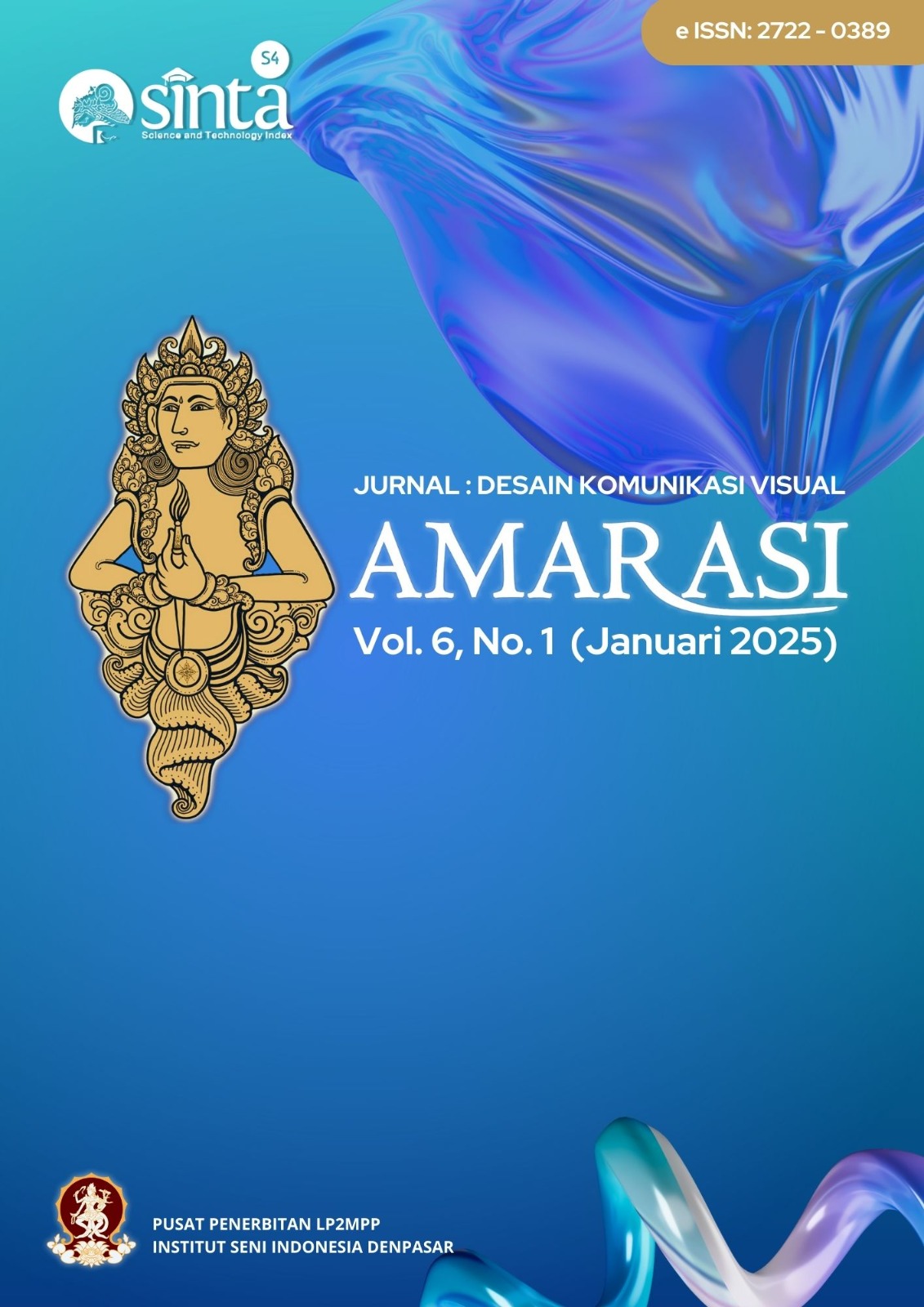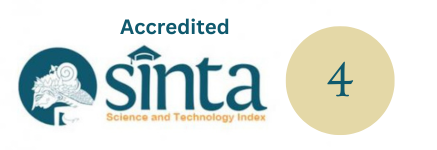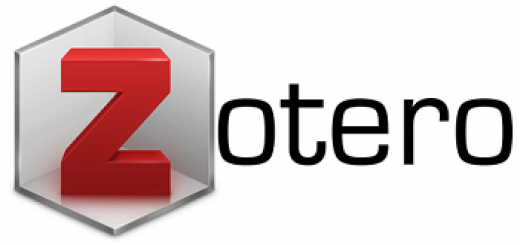DESIGN OF CAKA BALI CALENDAR AS AGNI OBJECT MERCHANDISE USING A NEO INDONESIAN APPROACH
DOI:
https://doi.org/10.59997/amarasi.v6i1.4742Keywords:
Caka Bali Calendar, Merchandise, Neo IndonesianaAbstract
The Caka Bali Calendar is a cultural heritage rich in traditional and spiritual values but often perceived as complex and difficult to understand by the modern audience. To address this, the calendar was redesigned using the Neo-Indonesiana approach, combining traditional elements with contemporary design. This project focuses on simplifying calendar components such as tri wara, panca wara, full moon, new moon, and sasih, creating an accessible and user-friendly calendar for the younger generation. Employing cultural research and visual exploration methods, the project delivers a minimalist, aesthetic, and functional design. The creative process incorporates modern digital techniques with the philosophy of Cipta, Rasa, and Karsa, emphasizing a balance between tradition and innovation. This calendar serves not only as a time marker but also as a medium for cultural education and preservation.
Downloads
References
Adithya, G. R., Dewi, A. K., & Nuriarta, I. W. (2023). Perancangan identitas visual pada media promosi event Open Studio 7 di Florto.
Agni, S. (n.d.). Neo-Indonesiana: Gerakan ide & frasa baru di Nusantara, Part 1. Medium. Retrieved January 24, 2025, from https://subjek-agni.medium.com/neo-indonesiana-gerakan-ide-frasa-baru-di-nusantara-part-1-awal-e76d81234c3c
Almanfaluthi, B. (2021). Desain Kalendar Dengan Inspirasi Kalendar Tradisional di Indonesia. Bhagirupa, 1(1), 17-21.
Arikunto, S. (2019). Prosedur penelitian. Rineka Cipta.
Fadli, M. R. (2021). Memahami desain metode penelitian kualitatif. HUMANIKA, 21(1). https://doi.org/10.21831/hum.v21i1.38075
Manik, S. I. (2018). Proses Digital Imaging Iklan Cetak Indonesia. JSRW (Jurnal Senirupa Warna), 6(1).
Monica, M., & Luzar, L. C. (2011). Efek warna dalam dunia desain dan periklanan. Humaniora, 2(2), 1084-1096.
Mutamakin, M. (2018). Analisis sistem penanggalan kalender Caka Bali dalam perspektif astronomi. Jurnal Ilmu Falak, 7, 1-10.
Pratama, I. P. W., & Sari, A. P. (2023). Mengenal TIKA sebagai kalender Bali kuno dalam kaitannya dengan ilmu Jyotisha. Sphatika: Jurnal Teologi, 14(2), 176-183.
Pratama, M. R. A., & Sastradipraja, C. K. (2022). Pembuatan video dokumentasi multimedia kantor DPRD Kabupaten Bandung Barat menggunakan software Adobe Premiere Pro. JITS (Journal of Information Technology Student), 1(2), 42-45.
Ramdhani, F. Z. (2020). Eksistensi kalender Bali dalam kultur sosial masyarakat multireligius Bali. Religious: Jurnal Studi Agama-Agama dan Lintas Budaya, 4(2), 81-92.
Rohman, A. (2018). Dasar-dasar manajemen publik. Empat Dua.
Salsabila, A., Sayekti, P., & Hermanto, Y. A. L. (2023). Perancangan visual identity pada butik E Collection Balikpapan. Jeskovsia: Jurnal Desain Komunikasi Visual Asia, 07(02), 29-42. http://repository.um.ac.id/id/eprint/292095
Thejahanjaya, D., & Yulianto, Y. H. (2022). Penerapan psikologi warna dalam color grading untuk menyampaikan tujuan dibalik foto. Jurnal DKV Adiwarna, 1, 9.
Tinarbuko, S. (2009). Semiotika komunikasi visual (edisi revisi). Jalasutra.
Downloads
Published
Issue
Section
License
Copyright (c) 2025 Widi Prabawa, Alit Kumala Dewi, Dwita Krisna Ari Ida Ayu

This work is licensed under a Creative Commons Attribution-NonCommercial-ShareAlike 4.0 International License.
Authors retain all their rights to the published works, such as (but not limited to) the following rights:
» Copyright and other proprietary rights relating to the article, such as patent rights,
» The right to use the substance of the article in own future works, including lectures and books,
» The right to reproduce the article for own purposes,
» The right to self-archive the article
» The right to enter into separate, additional contractual arrangements for the non-exclusive distribution of the article's published version (e.g., post it to an institutional repository or publish it in a book), with an acknowledgment of its initial publication in this journal (Arbitrer).






